Growing a startup from zero to $1 million in revenue might sound like a dream—but with the right SEO strategy, it’s entirely possible. Search Engine Optimization (SEO) is no longer optional in 2025. It’s the lifeline of organic traffic, lead generation, and brand visibility. This comprehensive guide outlines a 7-step SEO roadmap designed specifically for startups aiming to scale fast and sustainably. Whether you’re in SaaS, e-commerce, or services, this guide will help you implement practical, proven SEO tactics that deliver measurable results. Let’s dive into each step in detail to help you build predictable growth through SEO.Use Google Search Console to track your site’s performance and keyword impressions in search results.
Step 1: Research and Planning – The SEO Foundation
Your SEO journey begins with solid research. This is where you lay the groundwork for your entire strategy. Begin by defining detailed buyer personas that reflect your ideal customers—their age, job roles, pain points, online behavior, and decision triggers. Next, use keyword research tools like Ahrefs, SEMrush, Moz, and Google Keyword Planner to identify long-tail keywords with high intent and moderate competition. Look at what your competitors rank for, the structure of their content, and how authoritative their backlink profile is. Document all findings in an SEO playbook to guide your content calendar, site architecture, and link-building campaigns. Treat research as an investment—it pays dividends in every SEO action you take next and other is Keyword studies is the compass that guides your SEO journey.Optimize your mobile performance with insights from Google’s Mobile-Friendly Test.
Use keyword studies equipment like Ahref and SEMRush to find out relevant seek phrases which have a terrific balance between search volume and competition, shares Mark Valderrama, proprietor of Aquarium Store Depot.
Focus on long-tail key phrases that are unique on your area of interest, as they often have better conversion capacity.
Conduct Keyword Research To Identify High-Potential Search Terms
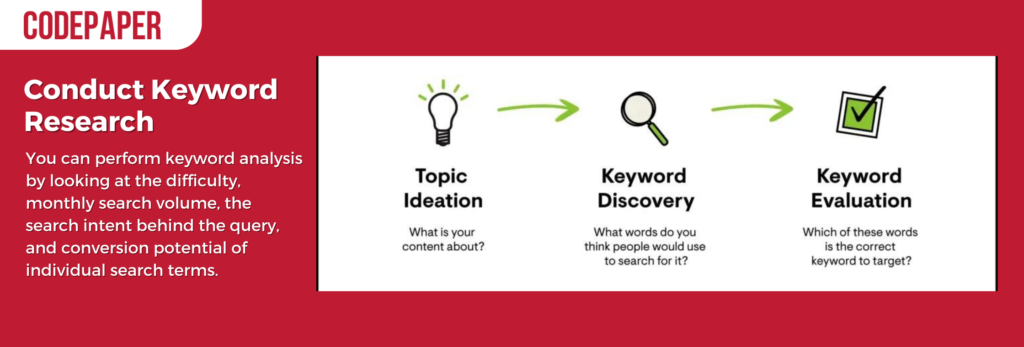
Conduct Keyword Research To Identify High-Potential Search Terms.
Research and Planning
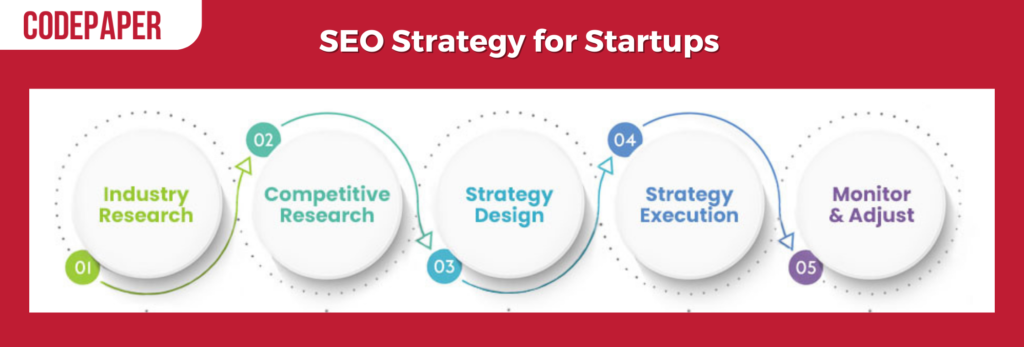
Step 2: On-Page Optimization – Structuring for Success
On-page SEO ensures your site is both understandable to search engines and friendly to users. Start with a logical website structure: homepage > category pages > detailed posts or service pages. Each page should have a unique title tag (50–60 characters) and meta description (150–160 characters) that include your primary keyword naturally. Use proper heading structure (H1 for titles, H2/H3 for sections), and make sure your URLs are clean and include keywords. Internal linking is a game-changer—link from new content to old and vice versa using relevant anchor text. Optimize all images with descriptive ALT text and compress them to improve load speed. Lastly, ensure your website is mobile-friendly and loads in under 3 seconds—a critical metric post-Google’s Core Web Vitals update.
On-Page Optimization – How to Do it Effectively?
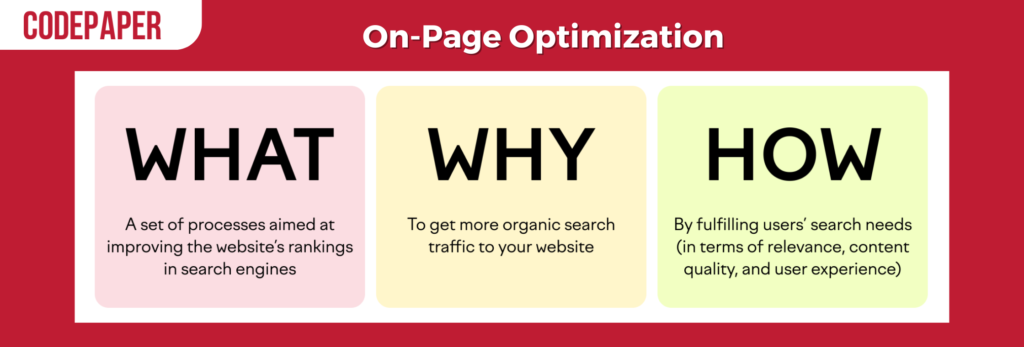
Now which you have a strong basis in place with your research and planning, it’s time to optimize your website for serps.
On-page optimization involves satisfactory-tuning various elements in your internet site to make it extra search engine-pleasant and enhance your visibility in search consequences.
This photo indicates a man the use of google analytics on a computer Let’s dive into the important thing components of on-web page optimization:
1. Develop a User-Friendly Website Structure With Clear Navigation
Ensure that your internet site is straightforward to navigate, each for users and search engines.
Sumeer Kaur, CEO of Lashkaraa.Com, shares an awesome tip, “Create a logical hierarchy of pages and arrange your content material into categories and subcategories.
Also, put into effect clean and intuitive navigation menus that make it convenient for visitors to discover what they’re searching out.
To learn how to scale faster with vetted engineers, check out our Staff Augmentation Services.
2. Optimize Title Tags, Meta Descriptions, Headers, and Urls
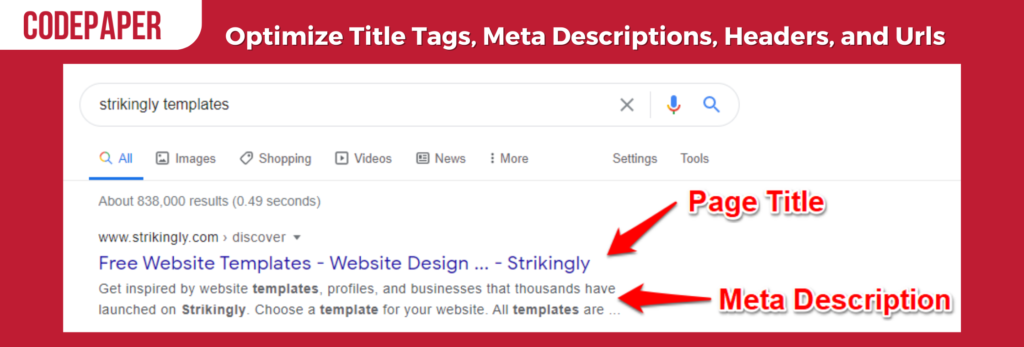
Craft compelling and keyword-wealthy title tags that accurately describe the content of each page. Include applicable keywords certainly within the title tags even as retaining clarity.
Similarly, create precise and persuasive meta descriptions that trap users to click through from search effects.
Incorporate headers (H1, H2, H3, etc.) to shape your content and make it more scannable. Optimize URLs by using making them descriptive, concise, and key-word-inclusive.
3. Incorporate Relevant Keywords Naturally Throughout the Content
Integrate your target keywords evidently during your website content. Aim for an awesome stability, making sure that your content material stays informative and attractive for your readers.
Alison Lancaster, CEO of Pressat.Co.Uk, says, Avoid key-word stuffing, as it may harm your seek ratings and deter users from engaging with your content material. Keyword stuffing used to paintings inside the past, now, it’s all approximately first rate content material that no one else can provide.
4. Optimize Image Alt Text and File Names

Search engines can’t recognize snap shots, so it’s essential to optimize them for search engine marketing. Assign descriptive document names to your pix that consist of applicable keywords, and make certain to fill in the alt textual content attribute with concise and descriptive text.
This enables serps apprehend the context and relevance of your photographs, enhancing your ordinary website optimization.
5. Ensure Fast Page Load Times and Mobile Responsiveness
Website velocity is vital for each user revel in and search engine ratings. With an increasing number of customers accessing the net through cellular devices, cell optimization is crucial for SEO success.
Optimize your website’s loading times by using compressing pictures, minifying code, and leveraging caching techniques. Additionally, make certain that your internet site is cellular-responsive, meaning it shows and functions correctly on cellular devices.
Discover our proven process for building robust digital solutions on our Custom Software Development Canada page.
Step 3: Compelling Content Creation – Fuel for Growth
Content is the magnet of SEO—it pulls users in, builds authority, and drives conversions. Start with a content strategy aligned to your funnel: TOFU (awareness), MOFU (consideration), and BOFU (conversion). Create detailed blog posts, comparison guides, case studies, video explainers, and checklists tailored to each stage. Use content clustering: write a pillar post (e.g., ‘Complete SEO Guide’) and interlink related sub-posts. Make content scannable—short paragraphs, bullet points, images, and infographics improve engagement. Don’t forget E-E-A-T: show Experience, Expertise, Authority, and Trust. Use statistics, quotes, and sources to back your claims. Publishing 2–4 high-quality pieces monthly, optimized with long-tail keywords, can dramatically improve domain authority and organic reach.
Compelling content material lies at the coronary heart of any a success search engine marketing method.
Creating treasured, informative, and engaging content can attract your audience, set up your know-how, and power natural traffic in your internet site.
Let’s delve into the key elements of compelling content creation:
1. Create a Content Strategy
Start by means of figuring out the topics and themes that resonate with your audience. Understand their ache points, challenges, and aspirations.
Develop a content material approach that addresses those needs and gives precious answers. Your content ought to be applicable, timely, and aligned with the interests of your audience.
2. Produce High-Quality Content

Consistently create content that goes above and beyond expectancies.
Whether it’s weblog posts, articles, movies, or infographics, awareness on handing over content material that offers particular insights, actionable hints, and practical recommendation.
Make your content material informative, well-researched, and backed by way of credible sources. Use clear and concise language to ensure readability and engagement.
3. Incorporate Targeted Keywords
While growing content, integrate your target keywords clearly. Ensure that they fit contextually and enhance the general pleasant of your content material.
Avoid keyword stuffing, as it is able to negatively effect the person enjoy and seek engine scores.
Instead, focus on creating treasured content material that obviously incorporates relevant keywords and phrases.
Explore how our AI Automation Services can streamline operations while boosting compliance.
4. Use Headlines and Subheadings to Enhance search engine optimization

Craft compelling headlines that take hold of attention and as it should be constitute the content material of your articles or blog posts. Use subheadings (H2, H3, and so on.) to interrupt down your content into digestible sections.
This no longer best makes your content more scannable and reader-friendly but additionally enables search engines understand the structure and relevance of your content.
5. Internal Linking to Improve Website Structure
Internal linking refers to linking applicable pages or articles within your website.
By strategically incorporating inner links, you manual customers to associated content, inspire longer on-web site engagement, and help search engines like google and yahoo discover and index your pages more correctly.
Aim for natural and contextually relevant inner hyperlinks that upload cost to the person enjoy.
Kenny Kline, President at Barbend, says, “Remember, consistency is fundamental in relation to content introduction. Develop a piece of writing calendar to keep a regular publishing time table and make sure a consistent glide of sparkling content.”
Step 4: Building High-Quality Backlinks – Authority Matters
Backlinks are endorsements in the eyes of Google. But not all links are created equal. Focus on earning backlinks from high-authority, niche-relevant sites. Start by guest posting on industry blogs—pitch original, valuable content ideas. Use HARO to get featured in media publications. Partner with influencers or SaaS tools for co-marketing content. Build link-worthy assets: research studies, tools, templates, and infographics. These attract links organically. Promote them on Reddit, Hacker News, and LinkedIn to expand reach. Track backlinks using tools like Ahrefs or Monitor Backlinks. Disavow toxic or spammy links periodically. Think of backlinks not as a race for quantity, but a long-term game of quality.
Building amazing backlinks is a essential issue of search engine optimization which could significantly impact your internet site’s visibility and authority in seek engine ratings.
Backlinks are hyperlinks from other web sites that factor on your internet site, indicating to serps that your content material is valuable and sincere.
Here are key strategies that will help you construct notable oneway links:
1. Develop a Link-Building Strategy
“Quality continually surpasses quantity in terms of backlinks. Focus on obtaining links from authoritative and applicable websites for your enterprise.”, says Edward Mellett, Co-founder, Wikijob.
These exquisite backlinks deliver greater weight in search engine algorithms and can definitely impact your search engine marketing efforts.
2. Identify Reputable Websites
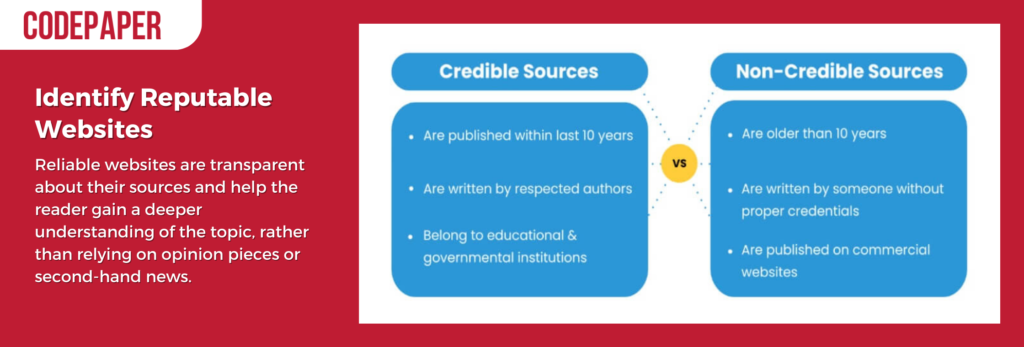
Research and identify professional websites, blogs, and on-line guides on your enterprise. Look for possibilities to collaborate, make a contribution visitor posts, or provide treasured assets.
Building relationships with these web sites can cause valuable one-way links and expanded publicity in your startup.
3. Niche-Relevant Guest Blogs
Guest running a blog allows you to show off your knowledge and attain a wider audience.
Identify authoritative websites that receive visitor contributions and offer to create precious content material for them.
Include relevant one-way links within the guest posts to force site visitors lower back in your internet site.
4. Seek Opportunities for Influencer Collaborations

Partnering with influencers or industry specialists can considerably increase your search engine optimization efforts.
Adam Fard, Founder & Head of Design at Adam Fard’ UX Agency, says, Collaborate with influencers who have a robust on-line presence and a following that aligns along with your target audience.
They can create content presenting your services or products and encompass one-way links to your website.”
5. Leverage Social Media Platforms
Use social media structures to percentage your valuable content material and have interaction together with your target market. By selling your content, you growth the probabilities of attracting back links from other users or websites that find your content material precious.
Building incredible one way links requires staying power, endurance, and a focal point on presenting price in your audience and enterprise.
Michael Hess, Ecommerce Strategy Lead at Code Signing Store, says: Avoid black-hat search engine marketing methods together with shopping for one way links or collaborating in hyperlink schemes, as those may have excessive outcomes for your website’s scores and reputation.
Identify bad inbound links, and do away with them as soon as you find them.
Step 5: Local SEO Optimization – Dominating Local Searches
If your startup targets a specific region (like ‘Web Design Toronto’ or ‘AI Consulting Canada’), local SEO is a must. Start by claiming and optimizing your Google Business Profile. Add accurate NAP (name, address, phone), business categories, services, business hours, and upload high-res images. Use local keywords throughout your site—add city and region in your page titles, content, image names, and schema. Create geo-specific landing pages and include testimonials from local clients. Get listed on local business directories like Yelp, Clutch, and industry-specific portals. Ask happy customers to leave 5-star reviews, and respond to all reviews with gratitude. The more trust signals you build around your local presence, the more likely you’ll rank in the ‘Local Pack’ of Google search.
If your startup serves a specific geographical area, optimizing your local SEO presence is crucial to attracting customers on your goal place.
Local search engine optimization allows you to target capability clients who’re looking for products or services of their neighborhood area. Here are key strategies for effective nearby search engine marketing optimization:
1. Claim and Optimize Your Google My Business (Gmb) Listing
Create and verify your Google My Business list, making sure that all data is accurate and updated.
Provide precise commercial enterprise facts, including your cope with, cellphone variety, website URL, commercial enterprise hours, and images.
Gerrid Smith, Chief Marketing Officer at Joy Organics, stocks an critical tip, “Encourage customers to depart opinions on your GMB listing, as effective opinions can decorate your nearby visibility.
2. Optimize Your Website for Local Keywords and Location-Specific Content

Incorporate local keywords during your internet site content, inclusive of on your titles, headings, meta descriptions, and body text.
Create vicinity-particular landing pages that cater to the desires and pastimes of clients in each focused vicinity. This allows search engines like google and yahoo apprehend the geographical relevance of your website.
3. Build Local Citations and Online Directories
Ensure your enterprise records is consistent across online directories and citation systems.
Submit your startup’s information to legit directories inclusive of Yelp, Yellow Pages, and enterprise-specific directories.
Consistent and accurate citations assist engines like google verify your commercial enterprise’s place and improve your nearby search ratings, says Max Whiteside, search engine marketing and Content Lead at Breaking Muscle.
4. Encourage Online Reviews and Testimonials

Positive online opinions and testimonials no longer simplest build agree with with ability clients but also affect neighborhood seek rankings.
Encourage glad clients to depart opinions for your internet site, Google My Business list, and other relevant evaluate structures.
Respond to reviews right away and professionally, displaying which you cost customer remarks.
5. Leverage Local Content and Community Engagement
Create regionally-focused content that resonates together with your target audience. This can consist of weblog posts, films, or social media content that highlights nearby activities, news, or purchaser success tales.
Engage with the local community through sponsoring local events, collaborating in charity initiatives, or taking part with different organizations within the place.
Step 6: Technical SEO – Strengthening the Core
Technical SEO is what makes your entire strategy function. If Google can’t crawl and understand your site, you won’t rank. Start with a full audit using Screaming Frog or Sitebulb. Fix crawl errors, broken links, duplicate meta tags, and 404s. Set up canonical tags correctly. Use structured data (schema.org) to tag articles, FAQs, products, and reviews. Improve your Core Web Vitals: LCP, FID, CLS. Optimize server response time, lazy load media, and compress JavaScript/CSS. Ensure every page is mobile-first. Submit XML sitemaps via Search Console. Robots.txt should not block important pages. Lastly, enable HTTPS and secure your site against spam and injection attacks. Good technical SEO builds trust with Google and users alike.
While developing compelling content material and constructing inbound links is vital, technical search engine optimization and internet site optimization play a essential position in ensuring that search engines can move slowly, index, and recognize your internet site correctly.
Here are key strategies for technical search engine optimization and website optimization:
1. Conduct a Comprehensive Website Audit
Start by performing an intensive internet site audit to discover any technical problems which could effect your search engine marketing overall performance.
Check for damaged links, duplicate content material, gradual web page load instances, and another problems that would restrict search engine crawlers or consumer revel in.
2. Optimize Website Speed and Performance

Website speed is a crucial ranking issue and affects user enjoy.
Optimize your website through compressing pictures, permitting browser caching, minifying CSS and JavaScript files, and leveraging content transport networks (CDNs).
Regularly display and optimize your internet site’s performance to make certain rapid loading times.
3. Ensure Mobile-Friendliness and Responsive Design
With most people of internet users gaining access to the web thru cell gadgets, it’s critical to have a cell-pleasant and responsive web site design.
Test your website on unique cell gadgets and screen sizes to make certain it adapts seamlessly. Google’s cell-first indexing prioritizes cell-friendly web sites in search consequences.
4. Implement Proper Website Structure and URL Optimization

Ensure your website has a clear and logical structure with properly-organized navigation.
Faizan Ahmed Khan, Sr. Content Marketing Specialist at UBUY Kuwait, says, Create person-pleasant URLs that are descriptive and encompass applicable key phrases.
Use breadcrumbs to beautify the person revel in and make it easier for serps to recognize the hierarchical shape of your internet site.
5. Implement Schema Markup
Schema markup is a established records markup that gives extra context to search engines about your internet site content material.
Implementing schema markup can improve the visibility and look of your website in search results, making it greater enticing for users to click through.
6. Optimize Meta Tags and Headers

Craft compelling and keyword-rich meta tags, together with identify tags and meta descriptions, for every web page of your internet site.
Use descriptive headers (H1, H2, H3) to shape your content material and make it greater scannable for users and search engines like google and yahoo.
7. Ensure Proper Xml Sitemap and robots.Txt File
Create and put up an XML sitemap to search engines like google to help them understand the structure and business enterprise of your website.
Also, ensure that your robots.Txt record is efficiently configured to allow engines like google to move slowly and index the applicable pages of your internet site.
Step 7: Analytics, Monitoring & Iteration – SEO as a Cycle
SEO is a marathon, not a sprint. Once everything is in place, shift your focus to performance tracking and continuous improvement. Use Google Analytics and Search Console to measure organic traffic, CTR, bounce rates, and conversions. Set up goal tracking and monitor engagement using heatmaps (Hotjar, Microsoft Clarity). Review keyword rankings weekly—adjust content that’s slipping and double down on what’s performing. Run monthly technical audits. Refresh outdated content every 3–6 months. Test different meta descriptions, internal link structures, and content formats. Stay on top of Google algorithm updates by following SEO thought leaders and platforms like Moz, Search Engine Journal, and Backlinko.
The adventure to SEO success doesn’t end with the implementation of strategies.
It’s essential to continuously screen and analyze your search engine marketing performance to pick out regions for development and make statistics-pushed decisions.
Here are key techniques for analytics, tracking, and iteration:
1. Set Up Google Analytics and Google Search Console
Google Analytics and Google Search Console are effective gear that offer valuable insights into your website’s performance.
Set up these tools to track key metrics which includes natural traffic, consumer conduct, conversions, and seek queries.
Monitor those metrics often to benefit a deeper understanding of your search engine optimization performance.
2. Analyze and Interpret Data

Regularly assessment the information from Google Analytics and Google Search Console to discover tendencies, patterns, and regions of development.
Look for opportunities to optimize underperforming pages, uncover new keyword possibilities, and refine your content and search engine marketing techniques based totally on facts-pushed insights.
3. Monitor Keyword Rankings
Keep track of your keyword scores in seek engine results pages (SERPs) to gauge the effectiveness of your SEO efforts.
Use keyword tracking gear to screen your role for goal key phrases and identify any fluctuations or possibilities for improvement.
4. Monitor Website Health and Technical Issues
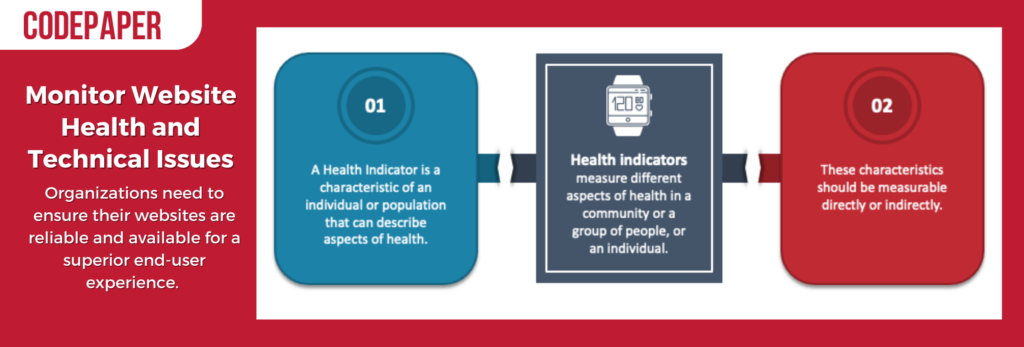
Regularly check for any technical issues or errors which can impact your website’s performance.
Monitor for broken links, move slowly mistakes, server issues, and every other technical issues which can avert your search engine optimization efforts.
Address these issues directly to ensure a smooth person experience and finest seek engine visibility.
5. Stay Updated With Algorithm Changes and Industry Trends
Search engine algorithms are constantly evolving, and staying up to date with the present day adjustments and enterprise developments is crucial.
Follow official SEO blogs, attend industry conferences, and engage in search engine marketing groups to stay informed. Adapt your search engine optimization techniques therefore to align with the converting panorama and search engine hints.
6. Continuously Refine and Iterate Your Strategies
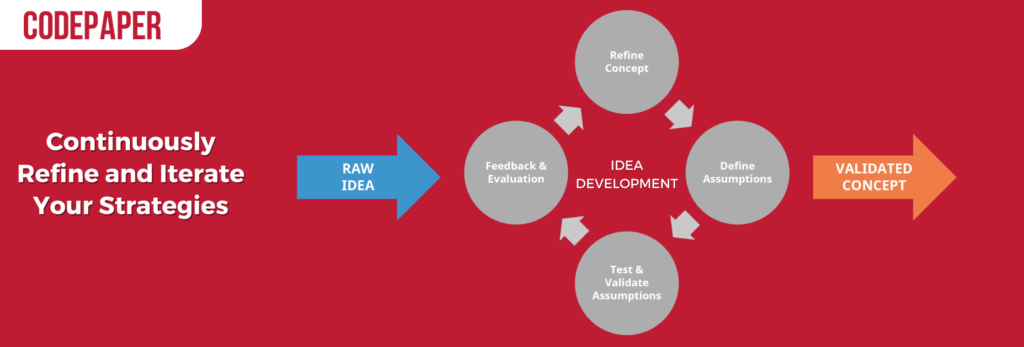
search engine marketing is an iterative process that requires ongoing refinement and improvement.
Based at the insights gained from analytics and tracking, make changes in your content material, key phrases, on-web page optimization, hyperlink building, and other search engine optimization tactics.
Test specific techniques, degree their effect, and optimize for that reason.
7. Seek Professional Assistance, if Needed
If handling search engine optimization for your own will become overwhelming or in case you need expert steering, recall hiring an skilled search engine marketing expert or organisation.
They can provide valuable insights, carry out in-depth analysis, and help you optimize your SEO strategies correctly.
Advanced SEO Tactics for Startups in 2025
– Create content hubs and interlinking clusters to dominate topical authority.
– Use AI tools like ChatGPT and SurferSEO for outlining, keyword ideas, and optimization.
– Optimize for voice queries using question-based content and schema markup.
– Leverage Core Web Vitals—Google uses these for UX-based rankings.
– Get featured snippets by directly answering questions with clear headings.
– Encourage user-generated content to build trust and increase keyword-rich material on your site.
– Establish brand search volume by growing your name across platforms.
As the search engine marketing landscape keeps to adapt, you want to stay ahead of the curve and leverage advanced processes to maximise your SEO efforts.
Here are a few superior search engine marketing strategies which can help your startup thrive in 2023:
Funnel Content Targeting
Understanding your audience’s adventure and aligning your content material with their precise needs at each stage of the funnel is important.
Jessica Shee, Digital Marketing Expert at iBoysoft, shares, “Create content material that caters to distinct levels of the customer’s adventure, from focus to consideration and choice-making.
By concentrated on precise keywords and addressing the pain factors and interests of your audience, you could attract and engage ability clients in the course of their buying system.”
Content Clusters
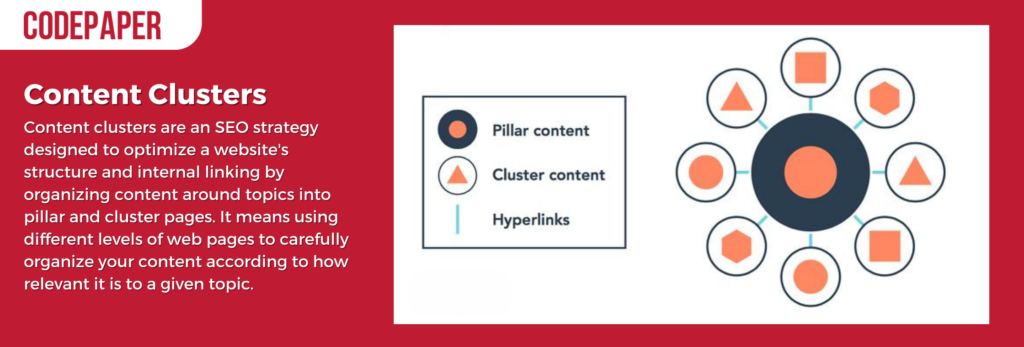
Content clusters are a strategic approach to organizing and linking associated content to your website.
By creating a pillar or cornerstone piece of content material that covers a vast topic, and then creating subtopics or helping content round it, you could set up your internet site as a comprehensive aid for your enterprise.
Interlinking these pieces of content indicators to search engines the depth and knowledge of your website, in the end improving your organic visibility and scores.
Brandable Experience
In these days’s aggressive panorama, building a robust emblem presence now not most effective fosters patron loyalty but can also enhance your seek scores and organic visibility.
Stephanos Oikonomou, Director at GoVisaFree, says, “Enhance your SEO efforts by focusing on creating a brandable enjoy on your audience.
Develop a completely unique logo voice, always use your brand elements throughout your website and content, and strive to offer a memorable and customized visibility.”
Voice Search Optimization

With the increasing reputation of voice assistants and clever devices, optimizing for voice search is becoming critical.
Consider how your target audience may additionally word their queries while using voice search and comprise natural language and long-tail keywords into your content.
Additionally, optimize your website for featured snippets, as they often appear in voice search effects.
User Experience and Core Web Vitals
User experience (UX) has an immediate impact on search engine optimization. Search engines prioritize websites that offer a seamless and enjoyable consumer experience.
Pay interest to Core Web Vitals, which can be unique page enjoy metrics consisting of web page loading velocity, interactivity, and visible balance.
Optimize your internet site to meet these metrics and beautify the overall person enjoy.
Video and Visual Content Optimization

Video and visual content material retain to gain traction in on line advertising. Incorporate videos, infographics, and other visible factors into your content strategy.
Optimize these belongings by way of offering descriptive titles, captions, and alt text to improve their discoverability in search engines like google and yahoo.
Additionally, host motion pictures on structures like YouTube or Vimeo and embed them for your website to capitalize at the exposure and site visitors ability of those structures.
User-generated Content and Social Proof
User-generated content material (UGC) can be a powerful SEO device. Encourage your clients to depart reviews, and testimonials, or share their reviews together with your services or products.
This now not handiest enhances your internet site’s credibility however also provides valuable social evidence that may have an impact on capability clients’ purchasing choices.
Mobile-First Indexing and Mobile Optimization

With mobile utilization surpassing computer, optimizing your website for cell gadgets is vital.
Tom Miller, Director of Marketing at FitnessVolt, says, “Ensure that your website is cell-friendly, loads quickly, and presents a unbroken enjoy across special display screen sizes.
Implement responsive design, optimize snap shots for cell, and prioritize cell-first indexing to improve your mobile seek scores.”
Startup SEO Case Studies: Real Results
1. Casper: The mattress giant built its presence using a mix of content, buyer’s guides, and educational SEO posts, generating 1.9M+ visitors monthly.
2. JustEat: Leveraged location-based pages and strong backlinking from local businesses to dominate the ‘near me’ space.
3. Glossier: Combined UGC, product SEO, and fast-loading pages to rank high on competitive beauty terms while reinforcing brand equity.
Each of these startups focused on a long-term, scalable SEO model that combined content, authority, and user intent targeting.
FAQ
1. What is the best SEO strategy for a startup in 2025?
The best SEO strategy for startups in 2025 involves audience research, on-page SEO, technical optimization, content marketing, and local SEO. Using structured content clusters and keyword targeting is key to fast scaling.
2. How can SEO help my startup reach $1 million in revenue?
SEO helps generate consistent, high-quality traffic and leads by improving visibility in search engines. A data-driven SEO strategy boosts organic growth, reduces CAC, and builds long-term brand authority.
3. How long does it take for SEO to show results for startups?
With consistent execution, most startups begin seeing noticeable SEO results within 3 to 6 months. Growth compounds over time as domain authority and backlinks increase.
4. What tools can help my startup implement SEO?
Popular tools include Google Search Console, Google Analytics, Ahrefs, SEMRush, and Rank Math SEO for WordPress.
Conclusion: Your SEO Blueprint to 7-Figure Growth
SEO is one of the most powerful tools in a startup’s growth engine. It’s compounding, cost-effective, and builds brand equity over time. By following this 7-step SEO strategy—from keyword research to technical optimization to local visibility—you’ll be positioned to scale sustainably. Need help implementing it? Explore our Staff Augmentation Services or Custom Software Development solutions at Codepaper to execute your vision faster.
